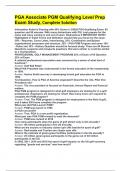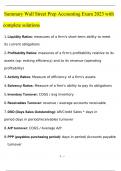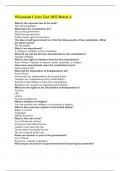, CHAPTER 1
Chapter 1
1.1 (a) Consider a one-dimensional slab of plasma whose whose bounding surfaces are nor-
mal to the x-axis. Suppose that the electrons (whose mass, charge, and number density
are me, −e, and ne, respectively) displace a distance δxe parallel to the x-axis, whereas
the ions (whose mass, charge, and number density are mi, +Z e, and ni = ne/Z, re-
spectively) displace a distance δxi. The resulting charge density that develops on the
leading edge of the slab is
σ = −e ne δxe + Z e ni δxi = e ne (δxi − δxe). (1)
An equal and opposite charge density develops on the opposite face of the slab. The
x-directed electric field generated inside the slab is
σ e ne
E =− =− (δx − δx ). (2)
x i e
ǫ0 ǫ0
The equation of motion of an individual electron inside the slab is thus
.. e2 ne
me δ xe = −e Ex = (δxi − δxe). (3)
ǫ0
Likewise, the equation of motion of an individual ion is
.. Z 2 e2 n i
mi δ xi = Z e Ex = − (δxi − δxe). (4)
ǫ0
Let us search for simultaneous solutions of Equations (3) and (4) of the form
δxe(t) = δxˆe cos(ω t), (5)
δxi(t) = δxˆi cos(ω t). (6)
It follows that
(ω2 − Π e2) δxˆe + ω p2 e δxˆi = 0, (7)
Πi2 δxˆe + (ω2 − ω p2 i) δxˆi = 0, (8)
where Πe = (e2 ne/ǫ0 me)1/2 and Πi = (Z 2 e2 ni/ǫ0 mi)1/2. The solutions are ω = 0
with δxˆe = δxˆi, and ω2 = Π 2 + Π 2 with Π 2 δxˆe + Π 2 δxˆi = 0. The former mode
e i i e
corresponds to a uniform translation of the slab. The latter mode is a plasma oscillation
whose frequency, Π, satisfies
1/2
Π = Πe2 + Πi2 , (9)
1
,2 □ Plasma Physics: An Introduction (Second Edition): Solutions to Exercises
and whose characteristic ratio of ion to electron displacement amplitudes is
δxˆi Π i2 me
δxˆ = − = −Z i . (10)
e Π e2 m
(b) Suppose that the electrons, whose temperature is Te, are distributed according to the
Maxwell-Boltzmann law,
ne + δne = ne exp(+e δΦ/Te), (11)
where ne is the equilibrium number density, and δne is the number density perturbation
due to the perturbing potential δΦ. Likewise, the ions, whose temperature is Ti, are
distributed according to
ni + δni = ni exp(−Z e δΦ/Ti). (12)
Thus, in the limit that δΦ is small, we obtain
e ne
δne = δΦ, (13)
Te
Z e ni
δni = − δΦ. (14)
Ti
If δΦ is a consequence of a small perturbing charge density, δρext, then the total charge
density is
2 2
!
e2 ne Z e ni
δρ = δρext + Z e δni − e δne = δρext − + . (15)
Te Ti
Thus, Poisson’s equation,
2 δρ
∇ δΦ = − , (16)
ǫ0
yields 2
2 δρext
∇ – δΦ = − , (17)
λ 2D ǫ 0
where !2 !2 !2
1 1 1 1
= + , (18)
λD 2 λD e λD i
with λD e = (ǫ0 Te/ne e2)1/2 and λD i = (ǫ0 Ti/ni Z 2 e2)1/2. Comparison of Equation (17)
with Eq. (1.14) in the book reveals that λD is the effective Debye length.
1.2 It is reasonable to assume, by symmetry, that the perturbed potential is a function only of the
radial spherical coordinate r. In other words, δΦ = δΦ(r). Thus, the governing differential
equation becomes !
1 d 2 dδΦ 2
2 r – 2 δΦ = 0 (19)
r dr dr λD
for r ≠ 0. However, in the limit r → 0 we expect the perturbed potential to approach the
Coulomb potential: i.e.,
q
δΦ → (20)
4π ǫ0 r
, Chapter 1 □ 3
as r → 0. We also expect the potential to be well behaved in the limit r → ∞ . Let δΦ =
V(r)/r. Equation (19) transforms to give
d2V 2
− V = 0. (21)
dr2 λD2
The solution that is consistent with the boundary conditions at r = 0 and r = ∞ is
√2 r
V(r) = q . (22)
4π ǫ0 exp − λD
Thus, √
δΦ(r) = q 2r . (23)
4π ǫ0 r exp − λD
According to Poisson’s equation, the charge density of the shielding cloud is
δρ(r) = −ǫ0 ∇2δΦ. (24)
However, according to the governing differential equation,
2 2
∇ δΦ = δΦ (25)
λD2
for r ≠ 0. Hence, √
2q 2r
δρ(r) = − exp − . (26)
4π r λD2 λD
The net shielding charge contained within a sphere of radius r, centered on the origin, is
∫ r ∫ √ ′
′ ′2 ′ 2q r ′ 2r ′
Q(r) = 4π δρ(r ) r dr = − r exp − dr . (27)
0 λD 0 λD
2
Thus, √ √
∫ √
∫
x.λD r/ 2
λD r/ 2 λD r/ 2
Q(r) = −q x e−x dx = −q −x e− 0 + e− dx , (28)
0 0 x
.
which reduces to √2 r √ 2r
Q(r) = −q 1 − 1 + exp − . (29)
λD λD
1.3 Consider a one-dimensional slab of plasma whose bounding surfaces are normal to the x-
axis. Suppose that the electrons (whose mass, charge, and number density are me, −e, and
ne, respectively) displace a distance δxe parallel to the x-axis, whereas the ions remain sta-
tionary. The resulting charge density that develops on the leading edge of the slab is
σ = −e ne δxe. (30)
An equal and opposite charge density develops on the opposite face of the slab. The x-
directed electric field generated inside the slab is
σ e ne
E =− = δx . (31)
x e
ǫ0 ǫ0








